11 Nights / 12 Days
Package price : ₹55,000/- Per Person
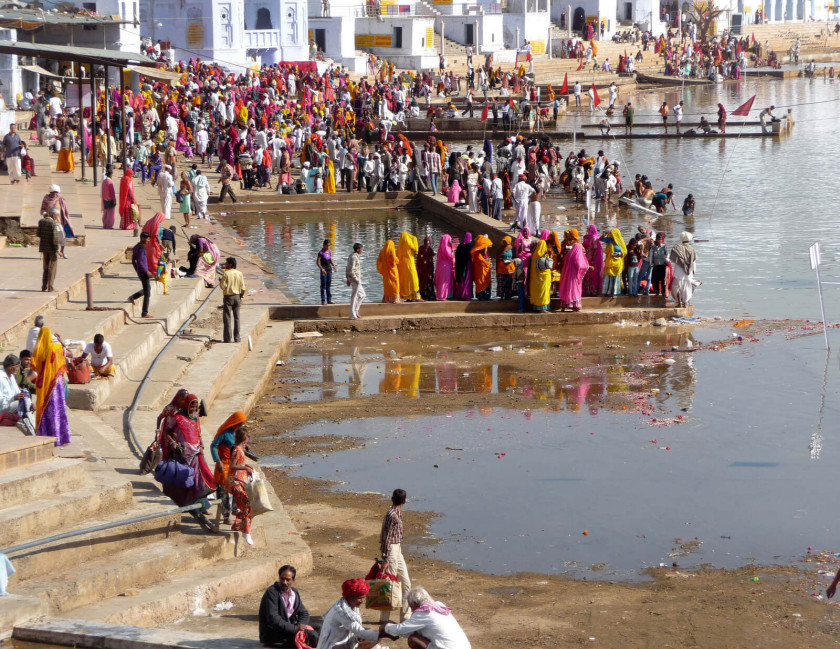
The Panch Dwarka with Pushkar Ajmer tour is a spiritual journey covering five revered Dwarka temples and the sacred towns of Pushkar and Ajmer in Rajasthan. This pilgrimage begins with visits to Dwarka in Gujarat, including the famous Dwarkadhish Temple, and then moves to Pushkar, home to the only Brahma Temple in India. The tour also includes Ajmer, where the revered Ajmer Sharif Dargah of Sufi saint Khwaja Moinuddin Chishti is located. Devotees experience a blend of devotion, culture, and history, making it a deeply enriching spiritual experience. The tour offers a chance to explore both ancient religious sites and the vibrant traditions of Rajasthan.
Daywise Panch Dwarka with Pushkar Ajmer Tour Package
Day 01: Ahmedabad – Dakor – Ahmedabad
Day 02: Ahmedabad – Lothal – Rajkot
Day 03: Rajkot – Dwarka
Day 04: Jamnagar – Dwarika – Bet Dwarika – Dwarika
Day 05: Dwarika – Porbandar – Somnath
Day 06: Somnath – Virpur – Gondal – Ahmedabad
Day 07: Ahmedabad – Mount Abu
Day 08: Mount Abu-Nathdwara-Kankroli-Udaipur
Day 09: Udaipur- Eklingji-Shrinathji -Kankroli-Srinathji
Day 10: Srinathji-Ajmer-Pushkar
Day 11: Pushkar-Jaipur
Day 12: Jaipur Departure
Day 1: Ahmedabad – Dakor – Ahmedabad
Upon your arrival at Ahmedabad railway station/airport, you will be greeted via our tour consultant who transfers you to the hotel. Check in to the hotel for refreshment, clean up and later set out for an excursion to Dakor to visit the famous temple of Shree Krishna-Shree Ranchhodraiji. It is 80 kms far from Ahmedabad and having a time distance of approximately 2 hours. In our manner get back to Ahmedabad, for dinner and night time live.
Day 2: Ahmedabad – Lothal – Rajkot
Morning after breakfast checkout and drive to Rajkot en route Lothal additionally referred to as the ‘mound of the Dead’. the archaeological excavation sites of Lothal come up with a few rare glimpses of the famous Harappan and Indus valley civilization. on reaching Rajkot, test into resort, clean up and later continue for a town excursion of Rajkot in the course of which you visit locations like Panch nath mahadeo temple, Ishwarya temple, Swami narayan temple, rotary midtown dolls museum and Ramakrishna Ashram, back to hotel for dinner and night time live.
Day 3: Rajkot – Dwarka
Dwarka, Enroot visit Jamnagar Lakhota lake, Lakhota museum& Bala Hanuman temple, evening reach Dwarka. Overnight stay at hotel. .
Day 4: Jamnagar – Dwarika – Bet Dwarika – Dwarika
Subsequent day after breakfast, we set out for Dwarika, the famous ‘Golden city’ and ruling capital of Bhagvan Krishna during his years of sovereignty. Dwarika is a completely important pilgrimage destination for all pious Hindus, first of all, because it is one of the holy chardhams and additionally one of the holy ‘sapta puris’. on reaching, take a look at into the resort and later continue to visit locations like Sri Nageshvara temple, Bet Dwarika, rukmini temple, gopi talav. within the night, attend the sandhya aarti on the well-known Dwarikadhish temple. returned to hotel for dinner and night stay.
Day 5: Dwarika – Porbandar – Somnath
In the morning, start to Somnath thru Porbandar, en path journeying the Tara Mandir planetarium, Kirti Mandr and Chowpaty.
The Tara Mandir planetarium is one of the famous sights in Porbandar. Unique effect movies are shown on an overhead spherical screen in a theatre, which scientifically tasks all celestial bodies like the stars and planets. The Kirti Mandir, one of the well-known visitor locations of Porbandar. This region holds great non secular and historic importance. it’s far stated to be the delivery location of Sudama, the quality friend and devotee of Bhagvan Krishna. Kirti Mandir is likewise the ancestral home of Mahatma Gandhi.
on arrival at Somnath, check-in to your resort. Later, continue to Bhalka Tirth and Somnath temple. a renowned religious area, Bhalka Tirth is a small but compact temple committed to Bhagvan Krishna. it’s far at this vicinity wherein Bhagvan Krishna became wounded by way of the arrow shot by means of a hunter called Jara, while he became meditating underneath a banyan tree. a temple called Mahaprabhuji Bethak was built subsequent to the tree with an imposing white idol of Bhagvan Krishna.
Day 6: Somnath – Virpur – Gondal – Ahmedabad
On this day, we can leave for Ahmadabad by way of avenue put up breakfast. Later, we can keep the adventure towards Swaminarayan temple, Navlakha Palace and Vintage Car museum at Gondal. Later, Steer up to the Ahmedabad for stay at night.
Day 7: Ahmedabad – Mount Abu
Subsequent day, after breakfast we depart for Mount abu, Mount abu is a scenic green retreat within the laps of densely forested hills. this is the most effective hill station that Rajasthan has, and is often seemed upon as a nice, cool green lands of Rajasthan. On reaching Mount Abu, take a look at into Resort and later move on to visit the famous Dilwara temples recognised for its problematic carvings and filigree paintings finished in marble. back to Hotel for dinner and night time stay.
Day 8: Mount Abu-Nathdwara-Kankroli-Udaipur
On this day we depart for Udaipur en course Nathdwara and Kankroli. At Nathdwara, we go to the renowned Shrinathji temple which belongs to Shrinathji, A little one shape of Bhagvaan Krishna. Shreenath ji’s idol housed here’s. This Idol is of 14th century. Subsequent, we visit Kankroli’s temple of Dwarkadhish and then we force down straight to Udaipur and test into hotel. In a while, we set out for a metropolis excursion of Udaipur during which we go to locations like Maharana pratap memorial, city palace, Surya chopar, lake pichola. Returned to motel for dinner and night stay.
Day: 09 Udaipur- Eklingji-Shrinathji -Kankroli-Srinathji
Next day we drive from Udaipur to Shrinathji. En route visit the unique Eklingji temple. The uniqueness of this temple lies in the fact that the deity at the temple 4-in-1 Gods. The face in the western side is that of Lord Brahma, in the eastern side is that of lord Surya, in the northern side is that of Shri Vishnu and in the southern side is that of Lord Rudra. After visiting Eklingji, we drive straight to Nathdwara and visit the opulent lord Krishna temple of Srinathji. After Srinathji Darshan we visit Kankroli to pay a Darshan at the Kankroli temple of Dwarkadheesh. For night stay we return to Nathdwara to put up at a hotel.
Day: 10 Srinathji-Ajmer-Pushkar
Next day we hit the road for Pushkar. En route we visit places like Adhai-din-ka-Jhonpra, Ana sagar lake, Daulat bagh, Khwaja Moinuddin-Chisti dargah at Ajmer. Next we drive straight to Pushkar. On reaching check into hotel and later proceed to pay a Darshan at Pushkar’s famous Brahma temple. Back to hotel for dinner and night stay.
Day: 11 Pushkar-Jaipur
Next day we depart for Jaipur. On reaching check into hotel and later proceed to pay a darshan at Lord Krishna’s Govind Devji temple and other places like Hawa Mahal, Jantar Mantar etc. Back to hotel for dinner and night stay.
Day: 12 Jaipur Departure
Next morning post breakfast you are dropped at Jaipur railway station/airport where our representative sees you off and you depart for your onward journey back home with lots of lofty memories of the tour.
Inclusion
- Daily supply of breakfast, and dinner
- AC accommodation on sharing basis
- AC Transportation for transfers and sightseeing
- Toll parking costs
- Arrival assistance
- Rajasthan state border tax
- Assistance of an experienced, skilled driver
- All sightseeing tours as mentioned in the itinerary
Exclusion
- GST 5% (currently applicable)
- All personal expenditures like mineral water, laundry
- Guide charges
- Entrance fees
- Costs arising from sudden natural calamities
- Travel insurance
- Increased costs on the surface transportation modes
- Additional sightseeing
- Extra vehicle usage
- Still camera plus video camera charges
- Anything not enlisted under ‘innclusios’
What is Panch Dwarka?
Panch Dwarka refers to five significant temples dedicated to Lord Krishna, spread across Gujarat, India. These temples are:
Dwarka (Gujarat): The primary and most famous temple, dedicated to Lord Krishna.
Bet Dwarka (Gujarat): An island temple near Dwarka, believed to be the place where Lord Krishna resided after leaving Mathura.
Sharda Dwarka (Gujarat): A lesser-known but significant temple near the town of Dwarka.
Rukmini Dwarka (Gujarat): A temple dedicated to Lord Krishna's wife Rukmini.
Madhavpur Dwarka (Gujarat): A temple located in Madhavpur, associated with the wedding of Lord Krishna and Rukmini.
What is the significance of Pushkar and Ajmer in this tour?
Pushkar: A sacred town in Rajasthan, known for the Pushkar Lake, which is surrounded by many temples, the most famous being the Brahma Temple. Pushkar is one of the few places in the world where Lord Brahma is worshiped.
Ajmer: Home to the famous Ajmer Sharif Dargah, the tomb of the revered Sufi saint Khwaja Moinuddin Chishti. It is a significant pilgrimage site for Muslims and is visited by people from all faiths.
What is the duration of the Panch Dwarka with Pushkar Ajmer tour?
The duration can vary depending on the specific itinerary, but typically the tour lasts between 7 to 10 days. This allows for sufficient time to visit all the major temples in Gujarat (Dwarka, Bet Dwarka, etc.) as well as Pushkar and Ajmer.
What are the best travel routes for this tour?
By Air: You can fly into Rajkot (for Dwarka) or Ahmedabad (for the Gujarat leg) and take a domestic flight to Jaipur (for Pushkar and Ajmer).
By Train: There are multiple trains from major cities like Mumbai, Delhi, and Ahmedabad to the towns of Dwarka, Pushkar, and Ajmer.
By Road: Hiring a private vehicle is a popular way to do this pilgrimage tour, as it allows flexibility in travel between cities.
What are the best times to visit these destinations?
The best time to visit Gujarat, Pushkar, and Ajmer is during the winter months, from October to March. The weather is cooler and more comfortable for traveling.
Avoid the monsoon season (June to September), as roads might be affected by rainfall, and some places may be less accessible.
What kind of accommodation is available during the tour?
Accommodation varies depending on the location:
Dwarka: There are a variety of options ranging from budget hotels to mid-range and luxury resorts.
Pushkar: Offers a wide range of options, including guesthouses, budget hotels, and more upscale properties.
Ajmer: Ajmer also offers several hotels ranging from budget to luxury, particularly near the Dargah.
What should I wear during the tour?
Since this is a religious pilgrimage, it's recommended to dress modestly. For temple visits, avoid wearing shorts, and cover shoulders and knees. In Pushkar and Ajmer, some sites (like the Ajmer Sharif Dargah) may also require covering your head (especially for men) and removing footwear before entering.
Are there any specific rituals or customs to follow while visiting the temples?
Most temples expect pilgrims to offer prayers and light incense. In Dwarka, pilgrims often take a holy dip in the Gomti River before entering the temple.
At Ajmer Sharif Dargah, visitors typically offer a chadar (a cloth offering) and pray for their wishes.
It’s common to receive blessings from the priests at the temples, and many temples have a system of donations.
Is the tour suitable for elderly or physically challenged individuals?
While the tour is generally manageable, the difficulty level depends on the specific itinerary and mode of transport. Some temple complexes have stairs, and certain locations like Bet Dwarka may require boat rides or walks. It’s best to consult the tour operator about specific needs for elderly or physically challenged travelers to ensure accommodations or alternate arrangements are made.
Are there any dietary restrictions or considerations during the tour?
In most temples, non-vegetarian food and alcohol are prohibited, and vegetarian food is commonly offered. Many places also serve prasad (a religious offering), which is a sweet or food offering that you can consume.
Pushkar is a holy town with vegetarian-only eateries due to the religious significance of the area.
Can I visit Panch Dwarka and Pushkar Ajmer on a single trip?
Yes, combining these destinations into one trip is common, but you will need adequate time for travel between the locations. Depending on the tour package, you can cover all the major sites within the span of 7-10 days.
Is the tour suitable for family groups?
Yes, this tour is suitable for families, especially those interested in cultural, spiritual, and religious experiences. Some travel operators offer customized family packages, including special amenities for children and elderly members.
Are there any festivals or special events during the year?
Dwarka: The Janmashtami festival, celebrating the birth of Lord Krishna, is a major event in Dwarka, attracting thousands of devotees.
Pushkar: The Pushkar Camel Fair, held annually in November, is a significant cultural event, but it is more of a cultural and trading fair, with fewer religious activities.
Ajmer: The Urs Festival at Ajmer Sharif Dargah, held annually in memory of Khwaja Moinuddin Chishti, draws a huge crowd of devotees.
Booking your tour is simple and can be done online or offline. Just follow these steps:
Fill the Inquiry Form: Submit your details through our "Enquiry Now" form, or connect via WhatsApp chat or Live Chat or alternatively, you can email us your tour requirements.
Consult with Our Travel Expert: One of our travel experts will contact you, understand your requirements, and create the perfect package for you.
Confirm & Book: Once you are happy with the package, make an advance payment to confirm your booking.
Send us an email with the following details
Fill in the Booking Details: Provide the necessary information, including:
Make the Payment: To the company Bank account in the name of NTP Tourism Affairs Limited only
Child Policy
Cancellation Charges/ Refund Policy
Written Cancellation by email on the official email id info@ntpgroups.com or letter to the office address will be considered for the refunds and cancellation with the following cancellation (deduction) and refund policy.
Cancellation Policy
Refund Policy: All the refunds are settled in 30 days from the written cancellation received by our office
For More Booking, Cancellation & Refund Policies, please refer to the terms and conditions of NTP Tourism Affairs Limited.
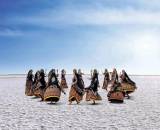
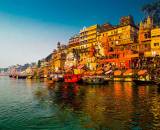
6 Nights 7 Days tour
Lucknow, Naimisharanya, Prayagraj, Varanasi Ajodhya Package Tour
₹50,000/-
PER PERSON



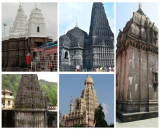


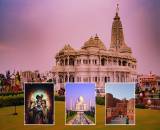
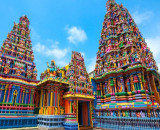



03 Nights / 04 Days
Amarnath Yatra by Helicopter from Chennai, Bangalore, Delhi, Hyderabad, Kerala, Mumbai
₹35,000/-
PER PERSON










